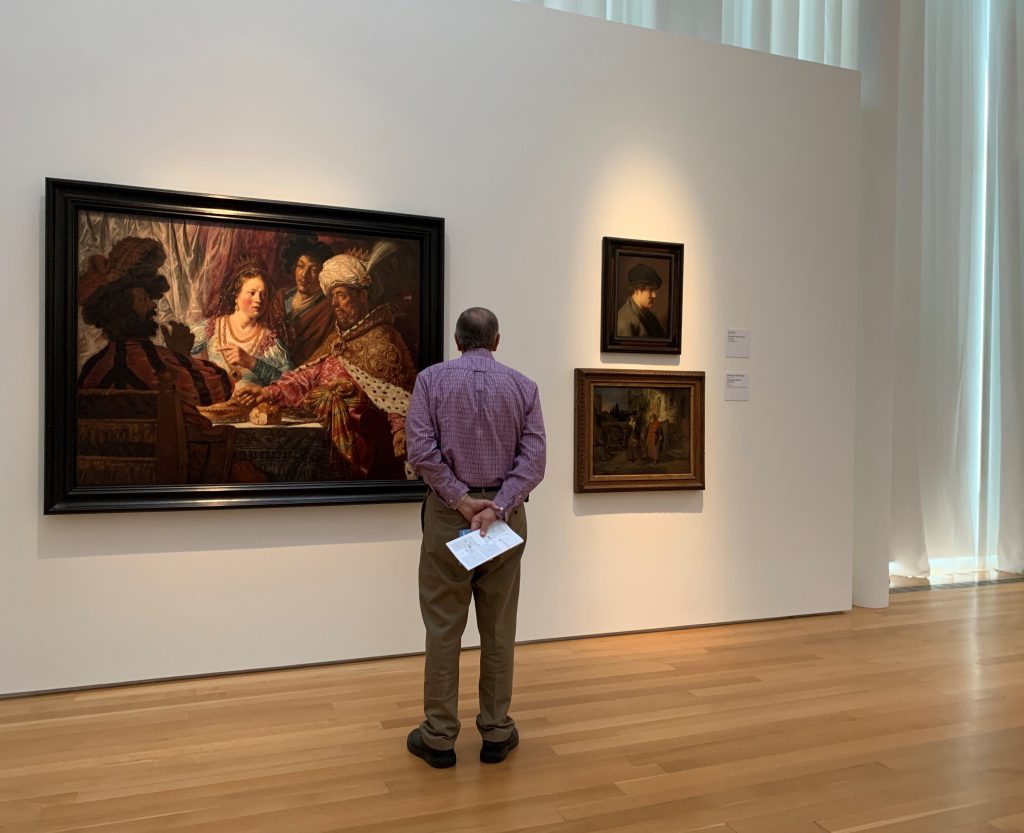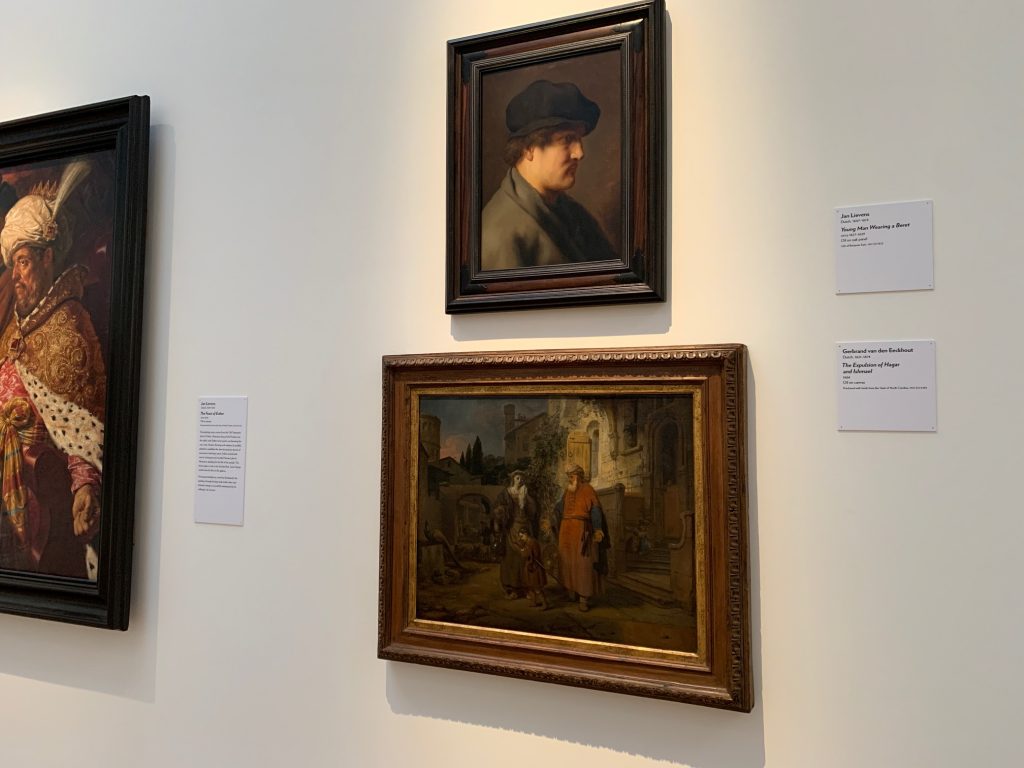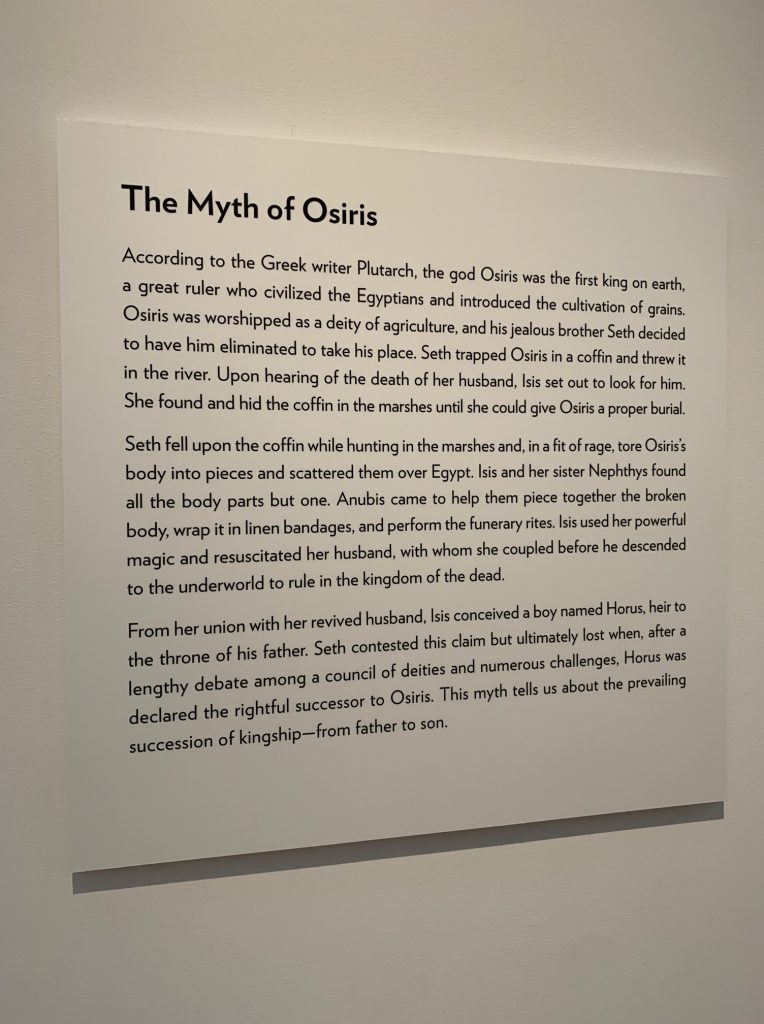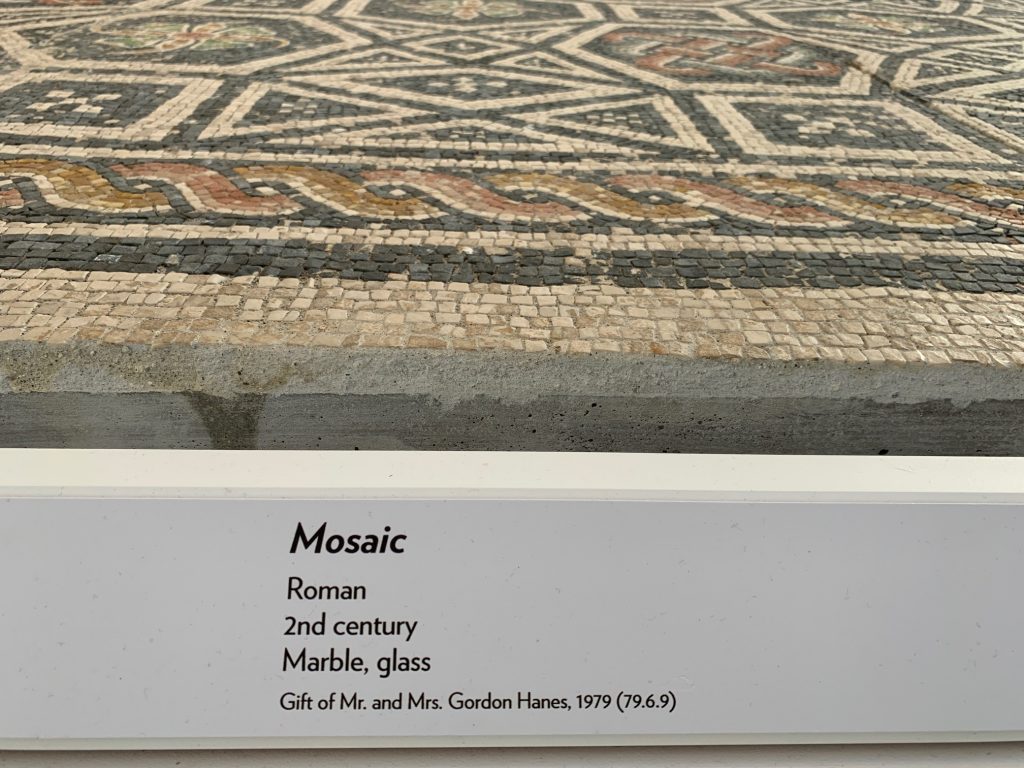Exhibition Planning and Label Writing 101: Top Tips (Story)
Many college courses in art history or art appreciation assign students the task of developing an exhibition of visual art. Does this apply to you? If so, read on! We interviewed NCMA curators Jennifer Dasal and Caroline Rocheleau to get the scoop on selecting works of art for exhibition and writing labels about them. Scroll down for the curators’ Top Tips:
TOP TIP #1: KNOW YOUR PURPOSE
What do you want your audience to know or learn?
Curators Dasal and Rocheleau are unanimous: you cannot select works for an exhibition, nor write any label text until you’ve thought through this question. Answering this prompt lets you know which objects to include in your exhibition to drive home your message. When selecting objects ask yourself: How does this object support the theme of my exhibition? What does this object bring to the conversation that other objects do not? Select objects on individual merit, but also think about how the group of objects work together as a whole to drive home your message.
TOP TIP #2: BE CONCISE
What information will you include, and what information will you leave out?
Dasal and Rocheleau agree– it’s great to be thorough in your research and compile as much information as possible about the works of art you’ve selected for your exhibition, but once you are ready to write labels you need to make choices about what to include, and what not to include. This connects back to Top Tip #1 – what do you want your audience to know or learn? Visitors are easily overwhelmed when presented with too much information at once, so when writing labels, leave out details that don’t support the overall message of your exhibition. Labels should contain no more than 120 words.
Some works in an exhibition may have labels that contain only the tombstone information—the most basic details about the work of art (artist’s name, title, date, medium, etc.). Other labels will contain both the tombstone as well as paragraphs of informational text. As you create your exhibition, consider which works of art should have tombstone-only labels, and which should have accompanying text. Remember you don’t want to overwhelm your visitor, so include text for works of art that best reinforce your exhibition’s message.
Sometimes curators use a stand-alone text panel to address a topic that relates to the exhibition, but is not specific to a single object or set of objects. Consider whether your exhibition requires a separate text panel:
TOP TIP #3: CREATE A FORMAT AND STICK TO IT
How will you organize the information you want to share?
According to Rocheleau, labels are a visual experience that should be pleasing to the eye. Visitors unconsciously register the aesthetic appeal of a label, and the “look” of a label should match the “look” of an exhibition. When creating labels for ancient works of art, Rocheleau, Egyptologist and Curator of Ancient Art, uses the following format for the tombstone:
Culture (e.g. Cycladic)
Place of Origin (if known)
Date and/or Time Period (e.g. Early Cycladic Period, circa 2500-2400 B.C.E.)
Material(s) (e.g. marble)
Credit line (e.g. Gift of Mr. and Mrs. X, 1986)
Dasal, Curator of Modern and Contemporary Art, uses a slightly different tombstone format for works of art produced more recently, where artist names and biographical information is known:
Artist’s name, year born
City/location born, where they (the artist) live now or their year of death
Title
Date
Medium
Credit line
Once your labels are all assembled for an exhibition, remember to look at them all together and see that they are uniform in format and style. By doing this, visitors can better connect the works of art and make their own conclusions regarding the information provided.
FINAL TIPS
Rocheleau says: “Remember that the objects are the reason for all the labels.”
Dasal advises: “Don’t be afraid to have your voice stand out on a label! Consider your own opinions on the art when writing labels while keeping the information objective.”
Good luck! Write, revise, and ask a friend to read what you’ve written to see how well you’ve communicated your message. Then, revise again!




